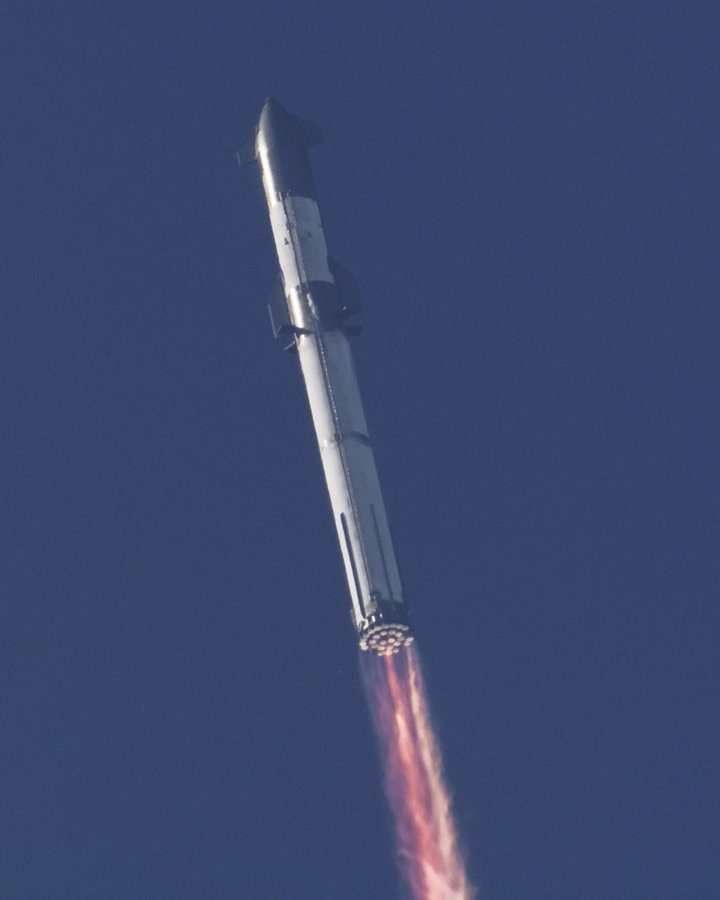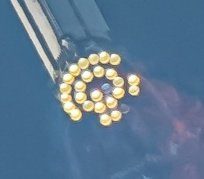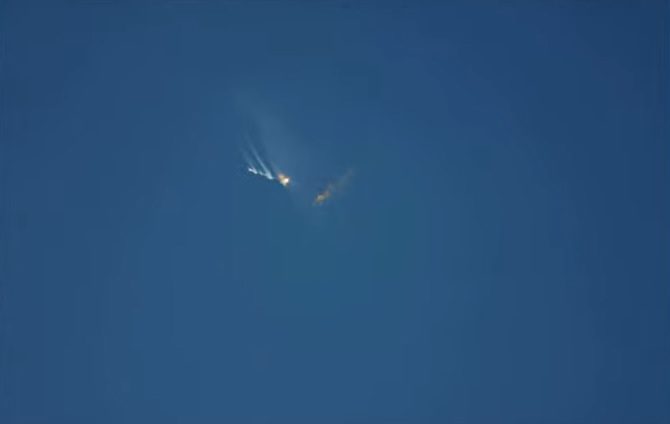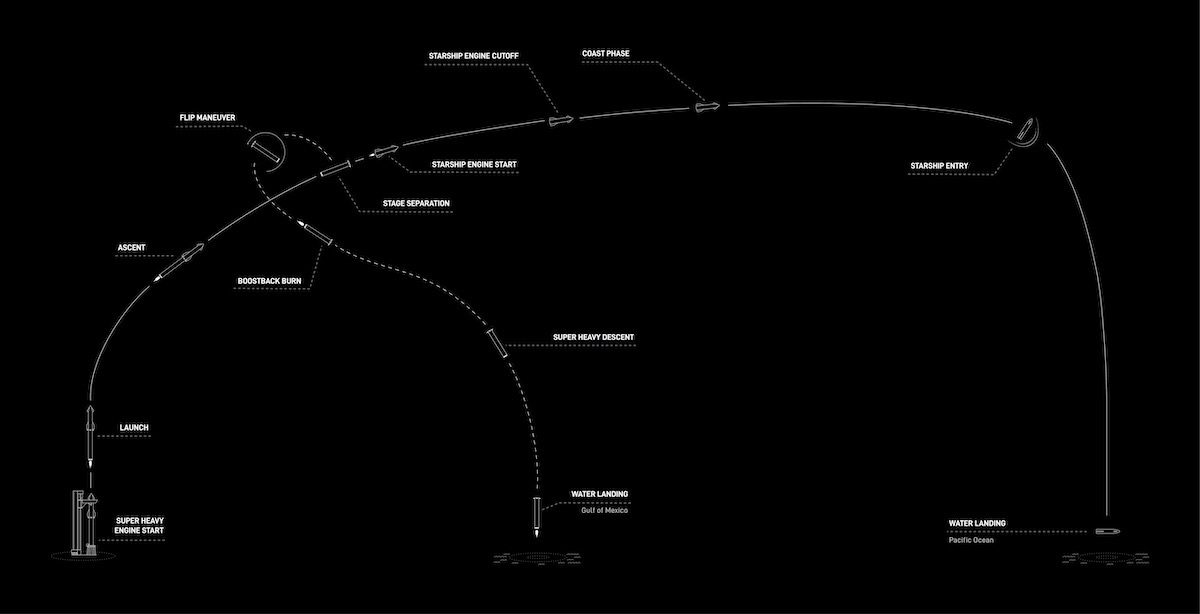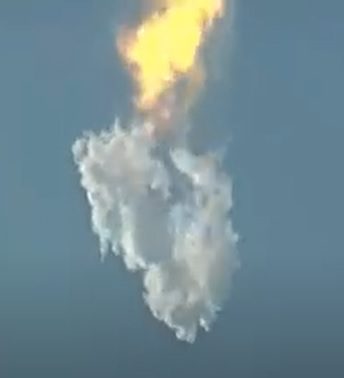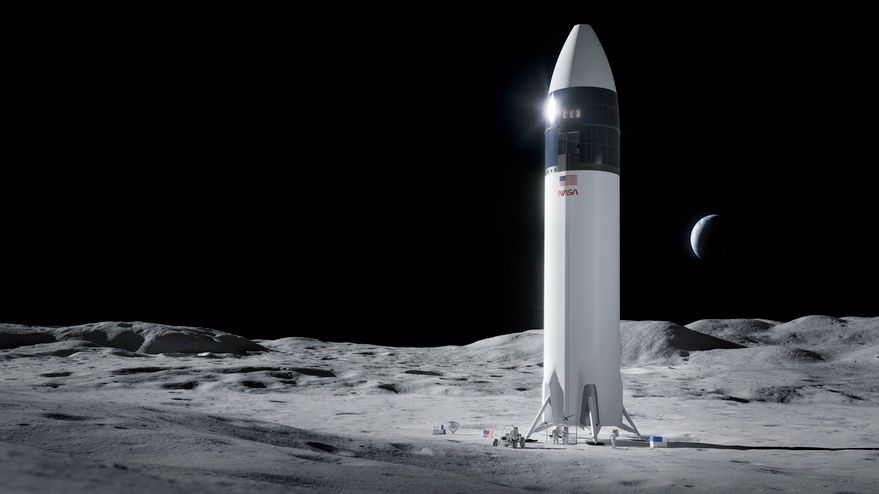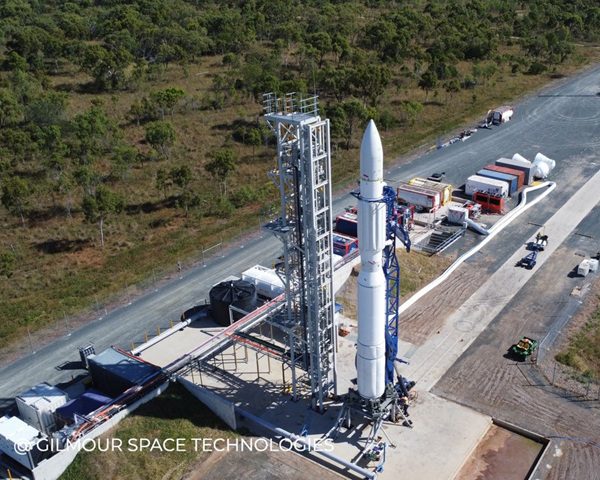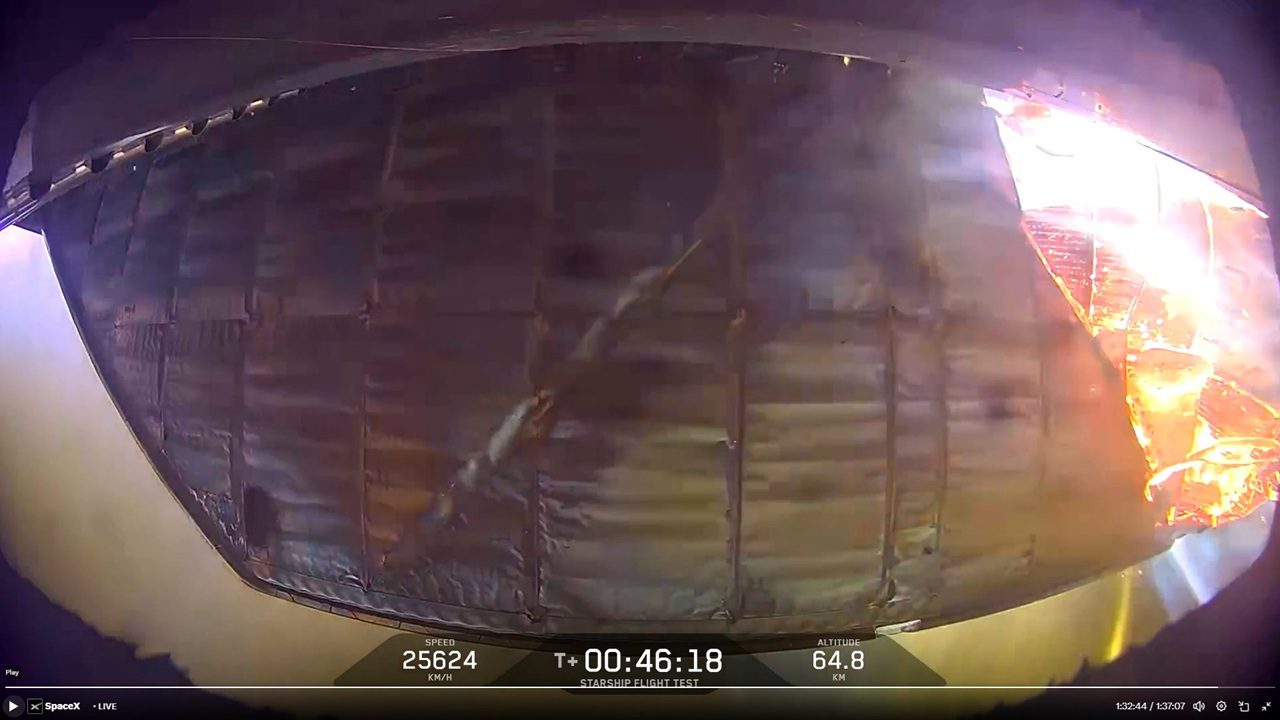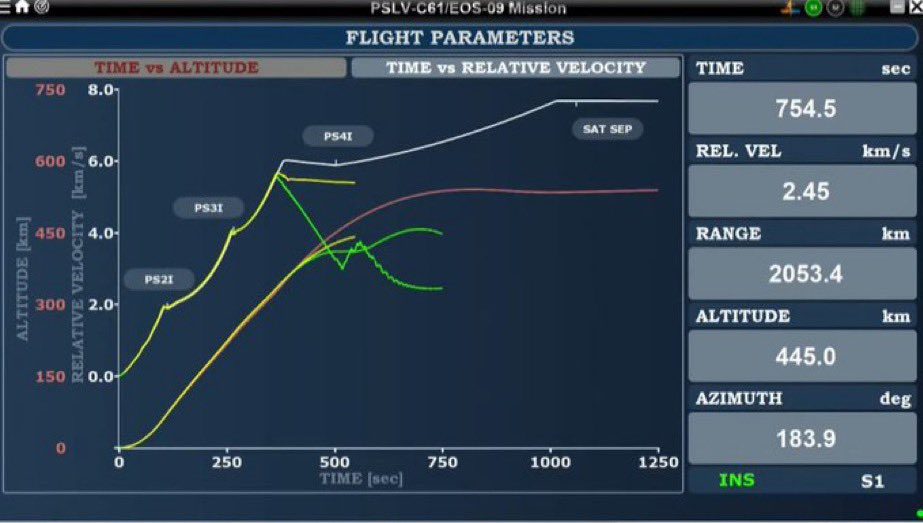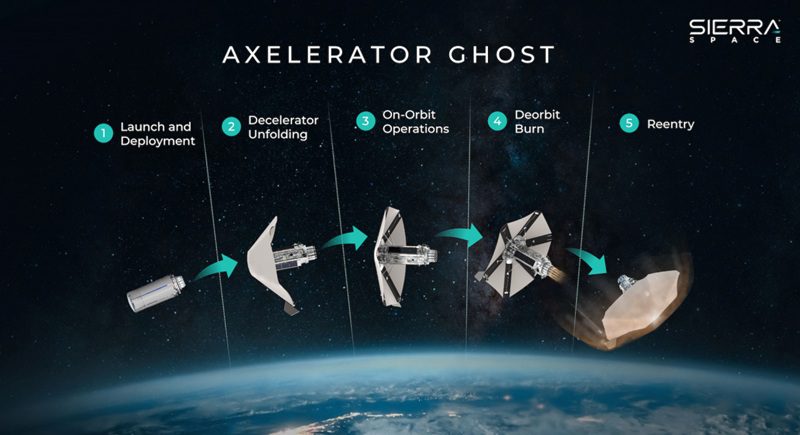Having suffered a three-day delay due to a frozen pressurisation valve fault, the long-awaited launch of the Starship/SuperHeavy combination – known simply as Starship – took place from Boca Chica beach, Texas, at 1333 GMT on 20 April. After a last-minute delay caused by propellant pressurisation and purge issues, the rocket lifted off successfully.
Starship is 120 m tall (394 feet) – for comparison, that’s 9 m taller than the Saturn 5 rocket which measured 111 m (363 feet) – making it the largest rocket ever to fly. It is powered by 33 Raptor engines. The total stage thrust at lift-off is 16 million pounds, more than the 10 million pounds of the N-1 Soviet Moon rocket. After ignition it became apparent that the slow ascent was even slower than expected as some of the Raptors had been shut down (in the end six were lost). Three engines were deemed not healthy enough to bring them to full thrust so they were shut down so the rocket lifted off with only 30 engines working. Some of the engines may have lost their nozzles in an apparent shearing or pressure related action as the rocket “slid off” the pad before it ascended. At 27 seconds into the flight, another engine (Engine 19) lost communications probably due to an explosion (an “energetic event” as Musk described it). The heat shields of Engines 17, 18, 19, or 20 were registered as having being knocked out by an explosive event.
Nevertheless, such was the redundancy for this lightly loaded flight that these engine failures did not prevent ascent. A slow stable climb was due to end with a stage separation and a “flip over” of stage 1. However, things did not turn out that way. At T-plus 62 seconds, there was heat shield damage near Engine 30 but it carried on working. The rocket lost thrust vector control at T+85 seconds.
The rocket assembly was seen to tip into a windmill spin with no separation taking place and so, at T plus four minutes one second, the rocket was deliberately blown up by Range Safety. SpaceX used its founder Elon Musk’s favourite euphemism, “Rapid Unscheduled Disassembly”, to describe the explosion. Nevertheless, questions were asked about why the rocket was not destroyed once it began to topple – instead, it rotated several times before it exploded. Elon Musk subsequently admitted that there was a long delay in the flight termination system working. “It took way too long to rupture the tanks.” said Musk in a Twitter forum reported by Michael Sheetz.
Before the flight, Elon Musk deliberately managed expectations of the flight downwards, indicating that just to clear the tower would be classed as a success. That said, while the launch was ultimately a failure to orbit, several positive milestones were achieved. The rocket cleared the tower with the first stage making a good smooth ascent, displaying its redundancy in thrust even with six engines out. The rocket assembly itself showed incredible strength both in getting through the Max Q maximum aerodynamic pressure condition, and in rotating several times before being blown up using the flight termination system.
“The vehicle’s structural margins appear to be better than we expected, as we can tell from the vehicle actually doing somersaults towards the end and still staying intact.” said Musk.
The only real disappointment was that the upper Starship stage did not get to fire itself to orbit and, more importantly, demonstrate its ability to re-enter from orbital velocity.
While eventually designed to land vertically to make it reusable, for this flight it was planned that is would re-enter and make an unpowered splashdown into the Gulf of Mexico, much like the Falcon 9 did in its early test career. However, a key difference between this new rocket and the earlier ones is that Falcon 9 – and the Falcon Heavy – only have reusable first stages/boosters. The new Starship has a second stage designed to make a re-entry through the Earth’s atmosphere at much higher velocities (Mach 25 instead of Mach 6). Achieving this while still being able to carry a payload to orbit is the difficult bit.
In a technical leap of faith, Musk decided that it was impractical and too expensive to build the upper stage out of a lightweight material, such as aluminium or carbon composite, because such a structure would need a large amount of thermal protection. After briefly researching large composite tank structures, he opted instead for heavier (and cheaper) stainless steel, a move that most other engineers would have eschewed. However, Musk correctly worked out that not only would stainless steel probably be able to take the thermal load, albeit with the hottest zones having extra tile protection (stainless fuel tanks already often survive re-entry) but, counterintuitively, there would also be a weight saving.
Thus, the real test of this flight is the upper stage and its ability to re-enter the atmosphere. If it could do this and (on later missions) eventually return to Earth for reuse, this could make such a financial saving that it would revolutionise spaceflight. In effect, it was what the Space Shuttle was originally envisaged to be before its design was compromised, and because the reusable technology was just not ready. The Space Shuttle’s reusable main engines required an expensive and time-consuming strip-down check before each flight as did its tile-based thermal protection system, the reusable solids were expensive to operate, and the external tank was never reusable.
The revolution does not end there. Musk considered various options for the propellants. Liquid hydrogen (with its liquid oxygen oxidiser) was very efficient in terms of specific impulse, but its low cryogenic temperature and the large tankage needed because of its low density (think of the external tank of the space shuttle) meant that it was unsuitable. Kerosene (with LOX as the oxidiser) was more dense but less efficient, and would eventually dirty the engines, even if they could still be used 20 or so times as demonstrated on the Falcon 9. However, there was a propellant that was less dense than hydrogen but, in combination with LOX, more efficient than kerosene: liquid methane.
Having learned the art of rocket building with the original simple gas generator cycle of the Falcon 9’s Merlin, SpaceX was ready to go high-tech with the Raptor, employing a highly efficient full-flow staged-combustion cycle which only the Russians had previous expertise in. It will be a worry to SpaceX that so many (six) of the Raptor engines failed on the first flight.
Musk always had bigger plans. His original idea was that the flights would be so common and so fast to turn around that a mission to Mars could be constructed using conventional refuelling of cryogenic propellants to load the craft up before a flight. In the long run, in situ production of liquid methane could be carried out on Mars. Whether practical or not, the fact is that Musk constructed a heavy-lift launch vehicle that has, in expendable mode, a low Earth orbit payload of about 200 metric tons (150 metric tons in reusable mode), and made human Mars exploration a practical proposition at last. Such is the operational cost difference per launch – about 100 times – that the days of NASA’s own heavy-lift rocket, the expendable SLS, must surely be numbered.
And it does not stop there. Short of funds, NASA looked for a design for a Human Landing System (HLS) to land astronauts on the Moon. SpaceX showed that a repurposed Starship – with the new technology of cryogenic refuelling – could fit the bill. So NASA chose this. It would still use its expendable Shuttle-derived SLS to transport human astronauts to lunar orbit via the Orion spacecraft. While the Starship derivative is thought of as an excellent long-term prospect for lunar transportation, critics predict that it will not be ready in time for the 2025 landing date of Artemis III. They argue that a smaller simpler lunar landing craft, more akin to the Apollo Lunar Module, would have been a better choice for the early landing missions.
Postscript: After the launch, concern was expressed about the amount of debris and particulate created and blown around by the engines’ exhaust, with several nearby areas, including nature reserves, affected by the “fall out”. Flying debris even damaged the tanks at the propellant farm. The pad tower had some minor damage but its underneath was deeply gouged by the exhaust. SpaceX is now expected to build a steel protector underneath the rocket, probably with an enhanced water suppressant system. It has also been suggested that flying debris damaged the engines and possibly the rocket’s on-board hydraulics but SpaceX has discounted this for the time being.
Update on 1 May 2023: Five environmental groups are suing the FAA (Federal Aviation Administration) saying it should have prevented the launch of the Starship/Super Heavy combination as it had not done a proper environmental review of the launch.

